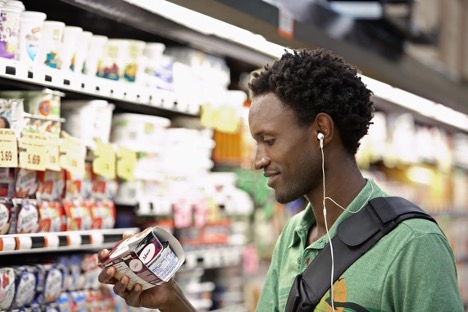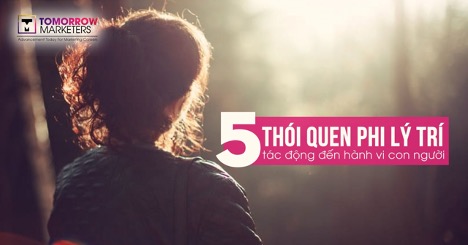5 irrational habits influence people decision
In the Predictably Irrational, Dan Ariel indicates some irrational behaviors and analyze the motivation behind them. Here are 5 discoveries that we can apply in business and marketing.
1. The relativeness tricks our choice
Not all of our choices are based on rational reasons. In many cases, especially when there are more choices and relativeness, people tend to make irrational decisions. A person wants to buy a pen for $25, and he suddenly remembers that the pen was sold for $18 in another store that is a 15-minute walk away. He will walk 15 minutes to save $7 as we all do. Another example with the same concept, one store sells a comple with a price of $455, and another store that is 15-minute walking distance sells that comple at $448 only. However, he will choose the more expensive one alternatively and most of us do the same.
In many cases, especially when there are more choices and comparative relativity, people tend to make irrational decisions
There are two reasons for these decisions. The relative benefit between the cheaper pen and the more expensive one is big in comparison with their price, while the relative benefit of two comples is so small compared with their price. Analyzing and making these decisions sounds logical, in fact, it’s irrational. In both circumstances, we can save $7 within 15 minutes of walking.
Marketing specialists of The Economist gave 3 options to order their newspaper for 1 year including (1) E-newspaper at $59, (2) printed newspaper at $125, (3) both of them at $125. To estimate the results of this marketing plan, 100 students at Sloan Business Administration University joined the experiment. The result was: 16 students chose option (1), no one chose option (2), and 84 students chose option (3). When option (2) was rejected, 68 students chose option (1) instead of 16, and 32 students chose option (3) instead of 84.
The marketing specialists of The Economist know that people hardly make a choice basing on any absolute standard, alternatively, people usually estimate the price of an object by comparing the relative benefit of this object to another object. Due to the relative comparison, no one chooses option (2) because option (3) is obviously better. By giving option (2) as a foil, The Economist leads customers to choose option (3) which means E-newspaper, initially sold at $59, will be free in option (3).
Here are some other examples of how relativeness influences people’s decisions. A person can give $200 tips for a $5,000 meal, but he will get a voucher to save 25 pennies for a bowl of porridge that costs $1. A person is ready to pay $3,000 for upgrading the feather chair in his $25,000 car, but he will consider buying a new sofa for his house. A person who should be happy with his salary, feel unhappy when he realizes his salary is lower than that of his colleague or his brother-in-law.
To avoid irrational behaviors, we need to break the relative comparison.
2. Power of “the free”
The free always excites us and affects our shopping behaviors. We will be happy when receiving a voucher for a free coffee pack even though we don’t like coffee or we don’t have a coffee maker. We will be cheerful when receiving a pen, a keychain, or a notebook for free at a conference even though we won’t use them and throw them away afterward.
The free creates a big influence in people’s behaviors. Enterprises always take advantage of their weapon “the free” to stimulate consumers to spend more. Amazon offers free shipping for orders with a certain quantity. Some customers don’t want the second book, but they do buy it to get free shipping. AOL changes the cost per hour to the cost per month with limited access.
These the free strategies bring satisfaction to customers but force them to pay more for products and services that they don’t need.
3. Cost for ownership
People tend to highly appreciate what they have. In the transaction, the sellers always evaluate their products higher than those in the market. We usually make incorrect decisions due to three irrational habits consisting of (1) love what we have, (2) focus on what we could lose than what we might get, (3) assume that others will view the transaction from our perspective.
Free creates a big influence on people’s behaviors. Enterprises always take advantage of their weapon “the free” to stimulate consumers to spend more.
The best way to give a great decision is to view the transaction in others’ perspective who is not the owner of the objects. The tendency to maintain and increase ownership results in a higher cost for us.
4. Effect of the expectation
Two people watched the same catch. One of them asserted that the goalkeeper’s feet were inside the line, and the other insisted that his feet were outside. The different expectations caused these honest people to have different views.
A team of neuroscientists used a modern FMRI to observe the human brain in the Coca and Pepsi recognition experiment. The participants would be pumped into their mouths an amount of beverage which could be Coca or Pepsi. The participants would receive information about the beverage that they were drinking. The neuroscientists realized that the center part of the participants’ brain was activated when they were about to drink Coca or Pepsi. Next, the frontal lobe which is behind the frontal cortex and relates to higher functions such as memory, perception, and thought was activated as well. When drinking Coca, the participants’ brains were activated stronger than when they drank Pepsi.
All of us have expectations and prejudices about subjects and objects. It’s hard to remove them from our minds. However, if we can realize them, we can view everything in the middle position, or we can refer to neutral opinions from the third parties.
5. The obsession and the price of Law of Supply and Demand
The naturalist Konrad Lorenz realized that gosling after hatching will stiff to any moving objects that they see (usually their mom). Even though the moving object is not their mom, gosling still stiff to it until they are mature. In another word, the first impression will attract and obsess gosling. Lorenz called it the obsession with nature.

Một điều đáng ngạc nhiên là bộ não của chúng ta cũng có hiện tượng khắc sâu như vậy. Khi tiếp cận với một món hàng mới nào đó, chúng ta cũng sẽ khắc sâu mức giá của sản phẩm đó vào bộ não của mình. Và mức giá mà chúng ta thấy lần đầu tiên – gọi là mỏ neo – sẽ nằm khá lâu trong đầu chúng ta và có liên quan chặt chẽ với mức giá mà chúng ta sẵn sàng trả để mua món hàng đó.
A surprising thing is that our brain has the same obsession as well. When approaching a new thing, we will inscribe its price in our brain. And the first price we see called the anchor will be in our mind for a long and relate to the price that we are ready to pay for.
Let’s look at the strategy to sell Tahiti black pearl of Mr. Assael – an Italian pearl merchant. After buying a large amount of black pearl that he couldn’t sell, Assael changed his strategy. He asked a favor from his friend – who was a famous gem merchant to display his black pearl next to the luxurious diamonds and ruby gems in his friend’s store at 5th Avenue. The price of these black pearl jewelry is much higher than that of what he sold. At the same time, Assael advertised Tahiti black pearls which were put on by the Manhattan wealthy women in the most noticeable place in a local newspaper. Thanks to his excellent marketing plan, Assael created the demands with higher price anchoring for his black pearls.
Professor George Loewenstein also experimented price anchoring with 55 students of Sloan University. In this experiment, the professor linked the price of the products with the social security number (SSN) of each student. Although the students could choose the price themselves to auction their products, finally, they were influenced dramatically by the price anchoring. The students with 2-last digits in their SSN from 80 to 99, are ready to pay 216% - 346% as higher as the students who have 2-last digits in their SSN from 1 to 20.
Consumers are affected by the price anchoring instead of their demands which should have been the main factor to decide the price.
The price anchoring appears a lot in our life. If we see a $3,000 TV LCD 75 inch, the price anchoring is $3,000 which affects our decisions significantly in shopping for a similar product. The tenants who move from a higher expense area to a lower one or in diverse usually need time to adapt to the new cost of their place.
Traditional economy believes that the price is based on the Law of Supply and Demand. It means the price is determined when the supply (the number of commodities in the market) meet the demand (the number of commodities in need). Accordingly, supply and demand are independent. However, as we can see from all examples above, the price is not based on this Law completely. Consumers are affected by the price anchoring which doesn’t relate to the Law instead of their demands which should have been the main factor to decide the price. Due to the irrational, the free market cannot determine the optimal price or adjust itself to have the best price.
Some people say that it is vital for the Government to interfere in some vital staples including electricity, medicine, education. They believe that a proper interference of the Government will limit the freedom but contribute to limit the market’s deviations.
Are you surprised to explore life from the perspective of behavioral economics? You will “encounter” these surprises when doing marketing because understanding the consumers’ behaviors and walking in their shoes are the habits of marketers.


